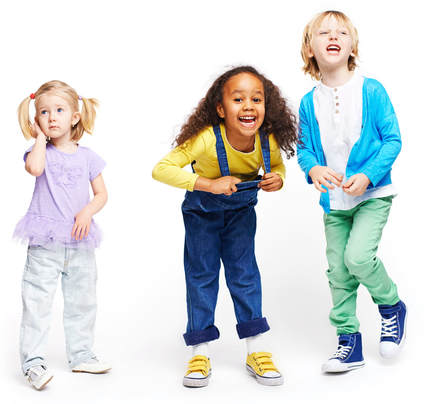Direct Guidance Techniques |
Page 20 |
Direct guidance techniques are used to respond to children’s mistaken behavior as it occurs. Behavior methods that are effective with one child may not be effective with all children. Each situation and each child is unique and behavior methods need to be based on the specific circumstances of the inappropriate behavior.
Basic Guidelines
- Communicate with children in a respectful manner that validates the child’s feelings.
- Provide children with the acceptable behavior and explain the reasons why the behavior needs to change.
- Assist the child in learning an appropriate behavior. For example ask the child what they might do if they were angry at another child. An acceptable alternative behavior may be to walk away from the situation.
- Clarify the classroom rules and expectations providing reasons for the limits.
- Model the behaviors you want children to follow by explaining and showing children the appropriate behavior. Example: “Put the books back on the shelf one at a time.”
The following are common direct guidance methods:
Offer children manageable choices.
Help children learn to make appropriate choices. Provide choices that are acceptable by offering two acceptable alternatives. Example: “Do you want to go to the book nook or block center?” Avoid offering choices when there is no choice and avoid asking closed questions where children are not allowed to answer such as “Do you want to take a nap?”
Help children learn to make appropriate choices. Provide choices that are acceptable by offering two acceptable alternatives. Example: “Do you want to go to the book nook or block center?” Avoid offering choices when there is no choice and avoid asking closed questions where children are not allowed to answer such as “Do you want to take a nap?”
Change the situation.
Some inappropriate behaviors can be resolved by changes to the physical environment, adding materials, removing equipment, splitting children into smaller or different groups.
Some inappropriate behaviors can be resolved by changes to the physical environment, adding materials, removing equipment, splitting children into smaller or different groups.
Redirect children and offer acceptable substitutes.
Provide children with an alternative behavior. “Alex, books are for reading. Let’s go to the book nook and find a place to look at books.” “Lizzie, the water needs to stay in the water table. You need to move to another area. There is playdough in the art area, let’s go over there.”
Provide children with an alternative behavior. “Alex, books are for reading. Let’s go to the book nook and find a place to look at books.” “Lizzie, the water needs to stay in the water table. You need to move to another area. There is playdough in the art area, let’s go over there.”
Redirect older children by teaching the child how to complete an activity in a safer or more acceptable way. “Donovan, you are really working hard on building the block city. How can you make the block structures safer and more stable?”
Logical consequences
Logical consequences should only be used with children over the age of three, provide a connection between the behaviors and the corrective action. Using logical consequences includes a reminder and the reason for the rule. Example: “Harry, the paint needs to be on the paper. You have painted the table and I cannot let you continue to paint. We cannot keep the paint on the table. Let’s get the water and a sponge so you can help clean the table. “
Logical consequences should only be used with children over the age of three, provide a connection between the behaviors and the corrective action. Using logical consequences includes a reminder and the reason for the rule. Example: “Harry, the paint needs to be on the paper. You have painted the table and I cannot let you continue to paint. We cannot keep the paint on the table. Let’s get the water and a sponge so you can help clean the table. “
Facilitate problem solving
Facilitate problem solving by teaching children the following process to resolve conflicts with other children:
Facilitate problem solving by teaching children the following process to resolve conflicts with other children:
- Ask the children to identify and explain the problem. Listen to all parties involved in the conflict. “What is the problem?”
- Ask the children to develop possible solutions to resolve the conflict. “What can you do?”
- Ask the children to consider possible solutions. “What might happen if......”
- Ask the children to select a solution and use it.
- Ask the children if the solution is working.
|
Caution about Using Rewards and Stickers
Behavior modification techniques are tempting to use because they are so effective when used correctly, at least initially. Children will work for the physical evidence of their good or poor behavior. But, behavior modification techniques do not emphasize the social and interpersonal reasons for cooperating.
|
Course Navigation Menu
|
|



